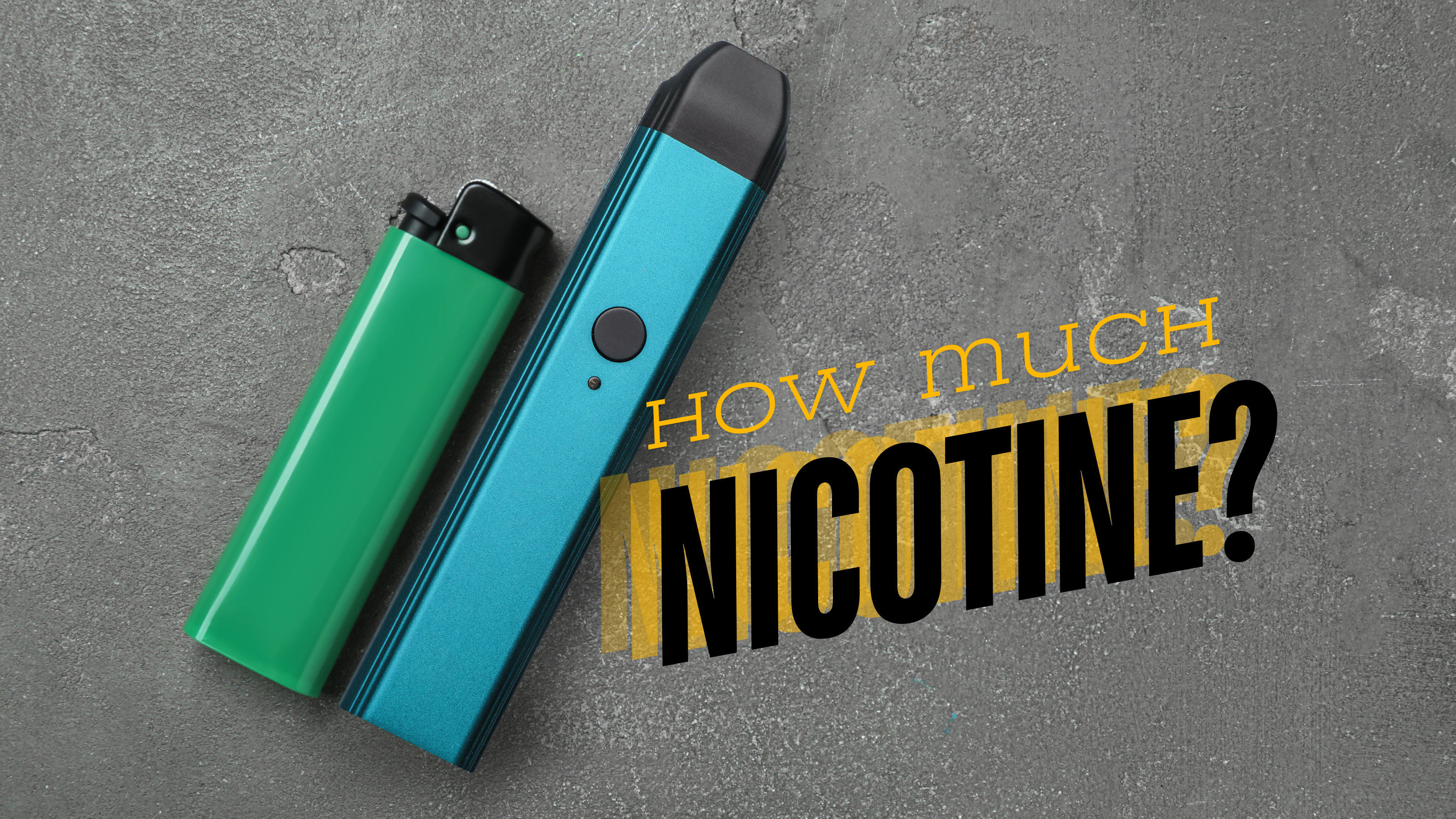
- by Tom Day
Understanding Nicotine Strengths: A Guide for Smokers and Vapers.
- by Tom Day
We all know someone that uses disposables. Are they too dependant on them, or absolutely ripping through their 2400 Puff device? Let's get into what could be a better alternative for them!
Whether you're a long-time smoker considering the switch to vaping or someone curious about nicotine levels in various products, understanding nicotine strengths is crucial. Nicotine content varies widely between cigarettes, rolling tobacco, and e-liquids, and each form has its own unique features and effects. In this blog, we'll break down these differences and explore the impact of nicotine strengths on dependence, cost, and health.
The Nicotine Content in Cigarettes and Rolling Tobacco
Cigarettes and rolling tobacco have been the go-to options for smokers for decades. However, not all tobacco products are created equal when it comes to nicotine content.
On average, a standard cigarette contains about 10-12mg of nicotine, though a smoker typically absorbs only 1-2mg of nicotine per cigarette. The rest is lost in the smoke and combustion process. Smokers who consume a pack a day (20 cigarettes) can absorb 20-40 mg of nicotine daily.
Rolling your own cigarettes can slightly change the nicotine intake. The amount of nicotine in hand-rolled cigarettes varies depending on the amount of tobacco used and how tightly it is packed. Typically, it contains around 7-20 mg of nicotine per cigarette, with similar absorption rates to pre-rolled cigarettes.
Nicotine Strength in E-Liquids: Freebase Nicotine vs. Nicotine Salts
When it comes to vaping, e-liquids are available in different nicotine strengths, usually measured in milligrams per millilitre (mg/ml). There are two primary types of nicotine used in e-liquids; freebase nicotine and nicotine salts. Each type offers distinct features and benefits.
Freebase nicotine is the purest form of nicotine, and it has been the standard in e-liquids for many years. It's the same type of nicotine used in traditional cigarettes. Freebase nicotine provides a stronger throat hit than Salt nicotine, which many ex-smokers find satisfying. The higher the nicotine strength, the harsher the throat hit. Common freebase nicotine strengths range from 0mg/ml to 18mg/ml. Higher strengths, such as 24 mg/ml, are also available but less common and now illegal under TPD regulation. The lower absorption rate relative to Salt nicotine allows for greater control over nicotine intake, making it easier to reduce dependence gradually.
Nicotine salts are a newer development in the vaping world. They are created with pure nicotine and result in a compound that is more stable and less harsh on the throat, even at higher strengths. Nicotine salts can be found in strengths as high as 50mg/ml, though these are illegal under TPD regulation. Usually, Salt nicotine is available in 5, 10, and 20mg.
Nicotine salts are absorbed more quickly into the bloodstream, providing a faster nicotine hit that more closely resembles smoking. Because of their smoother hit, nicotine salts are ideal for low-wattage devices like pod systems, which are often more portable and user-friendly, and far better for the environment than disposable vapes.
The Issue with High Nicotine Strength in Disposable Vapes
Disposable vapes have surged in popularity due to their convenience and ease of use. However, many of these devices contain unnecessarily high nicotine strengths, often ranging from 20mg/ml to 50mg/ml, using nicotine salts. While this can provide a quick nicotine fix, it also poses significant risks. The legal maximum nicotine limit in the UK is 20mg, ergo 50mg devices are not legal in this country.
The high nicotine content in disposable vapes can quickly lead to increased nicotine dependence, especially for users who may not have been heavy smokers before switching to vaping. The rapid absorption of nicotine salts, combined with the high strength, can make it difficult for users to control their intake, leading to higher levels of addiction.
Switching from disposable vapes to refillable devices offers several advantages;
Disposable vapes can be expensive in the long run. Refillable devices, while having a higher initial cost, are much cheaper over time. E-liquids for refillable devices are less expensive per millilitre, and the devices themselves can last for years, instead of being thrown on the street after two days.
Refillable devices allow users to choose their nicotine strength, flavour, and device settings, offering a more personalized vaping experience. This control can help users gradually reduce their nicotine intake, aiding in the eventual goal of quitting altogether.
Many disposable vapes use e-liquids sourced from China, where regulations may not be as stringent as in the UK. By switching to a refillable device, vapers can choose UK-manufactured e-liquids that often contain fewer sweeteners and additives, leading to a cleaner, more satisfying vaping experience. Tell me that "Chinese Hybrid Nicotine" sounds safe.
To wrap this up, understanding nicotine strengths is key to making informed decisions about smoking and vaping. While cigarettes and rolling tobacco have relatively consistent nicotine levels, e-liquids offer a range of strengths and types to suit different needs. However, the rise of high-nicotine disposable vapes has introduced new challenges, particularly concerning nicotine dependence. By considering a switch to refillable devices and choosing UK-manufactured e-liquids, users can enjoy a more cost-effective, controlled, and healthier vaping experience.
Thank you for having a read through our post - as always, we invite you to leave some thoughts and experiences!
Share:
Disposables or Pods; which is better?
Are Aliens the best coils for rebuildables?